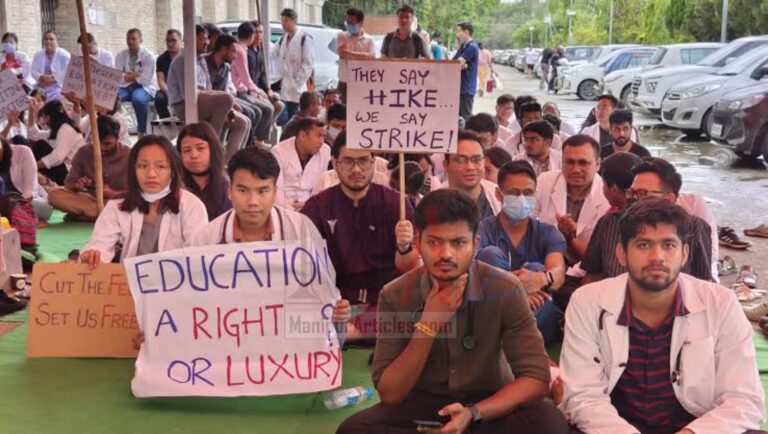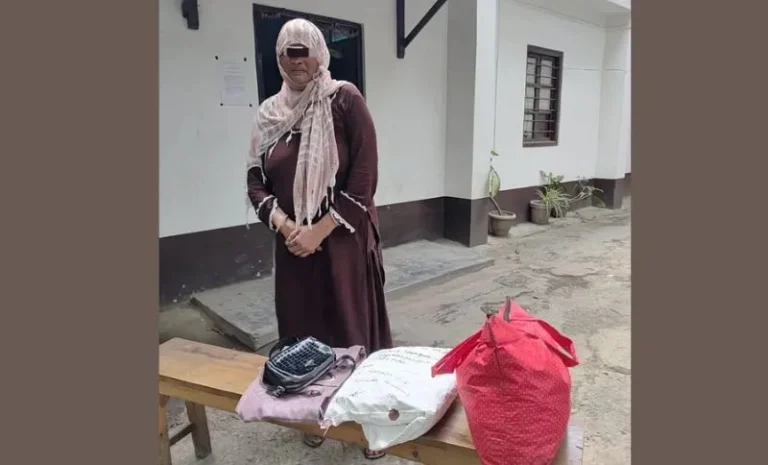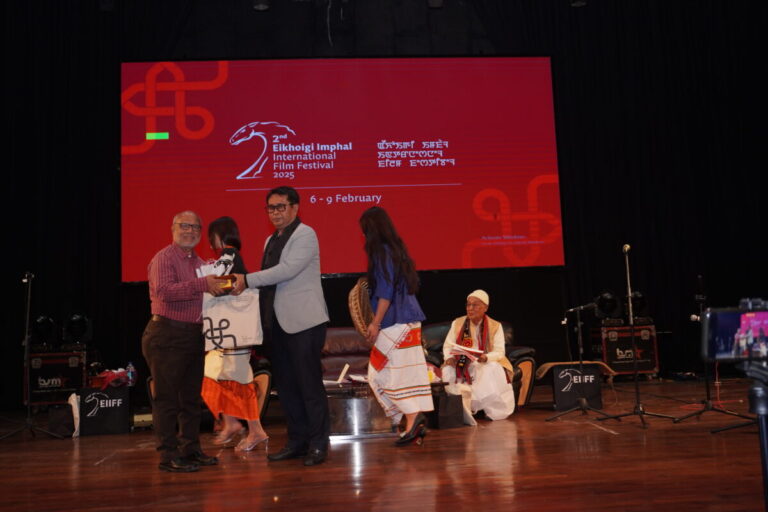Manipur Security Operation: Arrest of Two UNLF-K Cadres and the Seizure of Weapons
Introduction
Have you ever wondered how law enforcement keeps our communities safe from militant threats? In Manipur, a recent security operation has brought this question into sharp focus. Two cadres associated with the United National Liberation Front-K (UNLF-K) have been arrested, and a significant cache of weapons has been seized. This dramatic development is a testament to the persistent efforts of the authorities to root out militant elements and protect the public. In this article, we’re going to break down what happened, why it matters, and what the future might hold for Manipur’s security landscape.
Understanding the Context: The Militant Threat in Manipur
Manipur, with its rich cultural heritage and strategic location, has seen its share of challenges when it comes to militancy. For years, groups like the UNLF-K have been active in the region, sometimes resorting to violence and illegal arms trafficking. These groups often operate in the shadows, making it a constant battle for the law enforcement agencies. When militants manage to obtain weapons, the risk to innocent lives increases exponentially. Imagine a neighborhood where uncertainty is the norm—that’s the kind of environment these operations aim to change.
The Security Operation: What Went Down?
So, what exactly happened? In a well-planned operation, security forces targeted suspected militant hideouts and executed a series of raids across strategic locations in Manipur. The result? The arrest of two cadres linked to the UNLF-K and the seizure of a substantial number of weapons. These arrests are not random; they are the culmination of months of surveillance, intelligence gathering, and on-ground efforts by the police.
Here’s a breakdown of the key components of the operation:
- Targeted Raids: Authorities zeroed in on areas known to harbor militant activities. By focusing on these hotspots, they were able to disrupt the militants’ operations effectively.
- Intelligence-Driven Action: Detailed intelligence reports and continuous monitoring played a crucial role in pinpointing the location of the militants. This is like having a treasure map where every clue leads to the hidden cache of arms.
- Swift Apprehension: The operation was executed with precision, ensuring that the militants did not have a chance to escape. The arrest of the two UNLF-K cadres is a significant blow to the organization.
- Weapon Seizure: Alongside the arrests, a large cache of weapons and ammunition was confiscated. This not only weakens the militant network but also prevents these arms from falling into the wrong hands.
Why This Operation Matters
You might ask, “Why should we care about these arrests and seizures?” The answer is simple: public safety. When militants are armed and dangerous, they pose a direct threat to the community. By seizing weapons and arresting key figures, law enforcement is taking proactive steps to neutralize potential threats before they escalate into larger conflicts.
Think of it as removing the fuel from a fire before it spreads. These operations help in preventing violence, maintaining order, and ensuring that everyday citizens can live without the constant fear of militant attacks. Moreover, such actions also deter other criminal elements from engaging in similar activities, creating a ripple effect of enhanced security across the region.
The Role of Intelligence and Community Collaboration
A critical factor behind the success of this operation was the effective use of intelligence. Modern law enforcement relies heavily on gathering and analyzing data from various sources. This includes monitoring communication channels, tracking movements, and even engaging with local communities who might have useful information.
In many cases, the cooperation of the public acts as a force multiplier for the police. When citizens feel safe and supported, they are more willing to share tips that can lead to breakthroughs in investigations. This collaborative approach creates a win-win situation: the community feels more secure, and the police are better equipped to tackle criminal activities.
Inside the Minds of the Militants: What Drives Them?
Ever wondered what motivates someone to join a militant group? It’s a complex mix of ideological beliefs, socio-economic factors, and sometimes even personal grievances. In regions like Manipur, where historical and political tensions run deep, these groups often find fertile ground for recruitment. They prey on individuals who feel marginalized or disillusioned, promising them a sense of belonging or a cause to fight for.
However, once involved, many militants are caught in a vicious cycle of violence and retribution. The arrest of key cadres disrupts this cycle, making it harder for these groups to recruit new members. It’s a bit like cutting off the head of a snake—it sends a message to others about the consequences of such a path.
The Impact on Local Communities
The ripple effects of such operations are felt deeply by local communities. For residents of Manipur, these arrests are more than just news—they are a sign of hope and reassurance. When you hear that militants have been apprehended and weapons have been seized, it brings a sense of relief and renewed trust in the law enforcement agencies.
Community leaders have lauded the operation, emphasizing that such decisive actions are crucial for restoring normalcy. Parents, teachers, and local business owners are all stakeholders in this narrative. They want to see a future where their children can play freely in the streets, where businesses can thrive without the looming threat of violence, and where the overall quality of life is not compromised by fear.
Comparative Insights: Lessons from Other Regions
It’s interesting to note that Manipur’s approach is not isolated. Similar security operations have been conducted in various parts of the world, each offering valuable lessons. For instance, in other conflict-prone areas, targeted raids combined with intelligence gathering have proven to be highly effective in curbing militant activities.
Take, for example, operations in regions of Southeast Asia, where authorities have dismantled networks by carefully planning raids and leveraging local intelligence. These examples serve as a roadmap for how comprehensive security strategies can work, blending modern technology with traditional investigative techniques.
Technological Advances: A Game Changer in Security Operations
The digital age has revolutionized the way security operations are conducted. From drone surveillance to advanced communication intercepts, technology is now an integral part of modern law enforcement. In Manipur, the use of digital forensics and real-time tracking systems has enhanced the capability to monitor and act upon suspicious activities.
Imagine having a bird’s-eye view of the entire operation area—this is what modern technology provides. It allows law enforcement to coordinate multiple teams, share information instantaneously, and react promptly to evolving situations. As a result, the chances of militants evading capture are significantly reduced, and the overall efficiency of the operation is improved.
Challenges and Roadblocks: The Hurdles in Countering Militancy
Despite the success of recent operations, challenges remain. Militants are often well-prepared and adept at evading detection. They use sophisticated methods to hide their movements and communicate securely, making it a constant battle for security forces. Moreover, the rugged terrain and complex geography of regions like Manipur add another layer of difficulty.
These challenges are akin to trying to solve a puzzle where some pieces are deliberately hidden. Law enforcement agencies must continually adapt and refine their strategies to overcome these hurdles. The key lies in staying one step ahead of the militants by investing in training, technology, and community outreach.
Policy Implications and Governmental Initiatives
The arrests and seizures in Manipur are not just isolated incidents—they have broader implications for government policies. Such operations underscore the need for continued investment in security measures and the implementation of robust counter-insurgency strategies.
Government officials have expressed their commitment to intensifying efforts against militant groups. This includes enhanced border security, better intelligence sharing between agencies, and a comprehensive review of current security protocols. Policy reforms in these areas are critical for ensuring that the momentum gained from recent successes is not lost.
The Human Element: Stories Beyond the Headlines
Beyond the statistics and tactical details lies a human story. Every security operation impacts lives—both those of the law enforcement officers who put themselves in harm’s way and the community members who long for peace. When militants are arrested, it isn’t just a victory for the police; it’s a step toward healing for families and communities that have long suffered under the shadow of violence.
Consider the relief felt by a parent who no longer has to worry about their child’s safety, or the hope rekindled in a community that has seen too many conflicts. These human stories remind us that every action taken by the authorities has the potential to change lives for the better.
Economic Implications: Security and Growth Go Hand in Hand
Security isn’t just about preventing violence—it’s also a crucial factor in economic development. When communities are safe, businesses flourish, and investments flow in. The operation in Manipur, by curbing militant activities, is paving the way for a more stable economic environment.
Imagine a local market bustling with activity, free from the constant threat of disruption. Enhanced security fosters an atmosphere where entrepreneurs can take risks and innovate, ultimately contributing to the region’s growth. In this way, measures taken by the government have far-reaching benefits that extend well beyond immediate security concerns.
Social Repercussions: Trust, Unity, and the Fight Against Extremism
At its core, the battle against militancy is also a battle for social harmony. Incidents involving militants often lead to social fragmentation, where suspicion and fear erode the bonds that hold communities together. The recent arrests in Manipur, however, are helping to rebuild that trust.
When law enforcement agencies demonstrate their commitment to protecting the public, it reinforces the idea that unity and cooperation are the best defenses against extremism. Community events, local forums, and social media discussions have all played a role in spreading a message of hope and resilience. It’s like a community coming together after a storm, determined to rebuild stronger than before.
Future Prospects: What Lies Ahead for Manipur?
Looking to the future, one can’t help but wonder what the next steps will be. The successful operation against the UNLF-K cadres sets a precedent for further actions against militant networks in Manipur. But this is just the beginning. The authorities are likely to ramp up their efforts, focusing on preventive measures and proactive intelligence gathering.
Investments in technology, community outreach, and policy reforms are expected to accelerate, ensuring that Manipur remains one step ahead of any potential threats. The ultimate goal is to create a safe environment where every resident feels secure, and where the seeds of violence have no place to grow.
Building a Resilient Security Framework
To achieve lasting peace and stability, it’s crucial to build a security framework that is resilient and adaptive. This means not only relying on tactical operations but also addressing the root causes of militancy. Education, economic empowerment, and social inclusion are key pillars that need to be strengthened.
When communities are provided with opportunities and hope, the lure of extremist ideologies diminishes. It’s like tending to a garden—the better you nurture it, the less likely it is to be overrun by weeds. By investing in these areas, the government can create a holistic approach to security that benefits everyone.
Collaboration with International Agencies
In today’s interconnected world, no country stands alone in its fight against militancy. International cooperation and knowledge sharing play a pivotal role in enhancing local security measures. Manipur’s security forces have been known to collaborate with international agencies, learning from global best practices and adapting them to local conditions.
This collaboration brings in fresh perspectives and cutting-edge technology, making it easier to track and neutralize militant threats. Such partnerships are invaluable in ensuring that the fight against extremism is both comprehensive and effective.
The Role of the Media: Informing and Empowering the Public
The media plays an essential role in shaping public opinion and holding authorities accountable. In the case of the Manipur operation, responsible journalism has been crucial in disseminating accurate information and updating the public on the progress of the investigation.
By highlighting the challenges faced by law enforcement and the successes achieved, the media fosters a better understanding of the complexities involved in countering militancy. It also empowers citizens to play an active role in supporting these efforts, creating a more informed and vigilant community.
Lessons Learned and the Path Forward
Every security operation provides valuable lessons that help refine future strategies. The arrest of the two UNLF-K cadres and the seizure of weapons have offered important insights into the tactics and vulnerabilities of militant groups. These lessons will undoubtedly inform future operations, ensuring that the authorities remain effective and proactive in their approach.
From enhancing intelligence networks to improving community engagement, each step taken today paves the way for a safer tomorrow. The path forward lies in continuous adaptation and the willingness to learn from both successes and setbacks.
Conclusion: A Step Toward Lasting Peace
In wrapping up, the recent security operation in Manipur, which led to the arrest of two UNLF-K cadres and the seizure of weapons, marks a significant milestone in the ongoing battle against militancy. It’s a powerful reminder that through targeted action, community collaboration, and modern technology, even the most entrenched threats can be dismantled.
For the people of Manipur, this operation is a beacon of hope—a sign that their safety is a priority and that the government is committed to creating a secure environment. As we look ahead, it’s essential to continue supporting these initiatives, recognizing that every effort counts in the larger quest for peace and prosperity.
FAQs
- What was the primary objective of the security operation in Manipur?
The primary goal was to apprehend militant operatives linked to the UNLF-K and to seize weapons that could pose a threat to public safety. This operation aimed to disrupt militant networks and restore security in the region. - How did law enforcement locate the UNLF-K cadres?
Authorities relied on a combination of intelligence gathering, community tips, and modern surveillance technology. These efforts helped pinpoint the location of the militants, leading to their successful arrest. - What impact does the seizure of weapons have on regional security?
Seizing a large cache of arms directly reduces the potential for violence and limits the operational capabilities of militant groups. It also serves as a strong deterrent against future criminal activities. - How does community cooperation enhance security operations like this?
When local residents share valuable information and remain vigilant, it significantly boosts the effectiveness of law enforcement. This collaborative approach creates a network of support that is crucial for preventing and solving crimes. - What are the future plans for strengthening security in Manipur?
Future plans include increased investments in technology, enhanced intelligence networks, community outreach initiatives, and comprehensive policy reforms aimed at addressing both immediate threats and the underlying causes of militancy.



